September – 2017: Greater Yellowstone Area – Montana
Valley meadows link steep mountain peaks in the Gallatin Range north of Yellowstone National Park. We traveled a rough valley road through the western edge of Tom Miner Basin, searching for grizzly bears that had been seen near the grass fields above the creek just the night before. Not a bear was in sight. As the evening shadows climbed to the ridge-tops, we gave up and decided to head back to camp.
Along the road, board fences draw a boundary between grassy meadows and the fingers of forests jetting out from the foothills. The expectation is that cattle are pastured inside the fences; on the outside – all things wild.
Something wasn’t quite right about the outline of the two dark forms we spotted in the distance – charging along the perimeter of the fence. They were too lanky – but not horse-like; and they couldn’t be cattle. As we drew closer we saw they were just on the outside of the fence. Then we realized, “They are moose!” 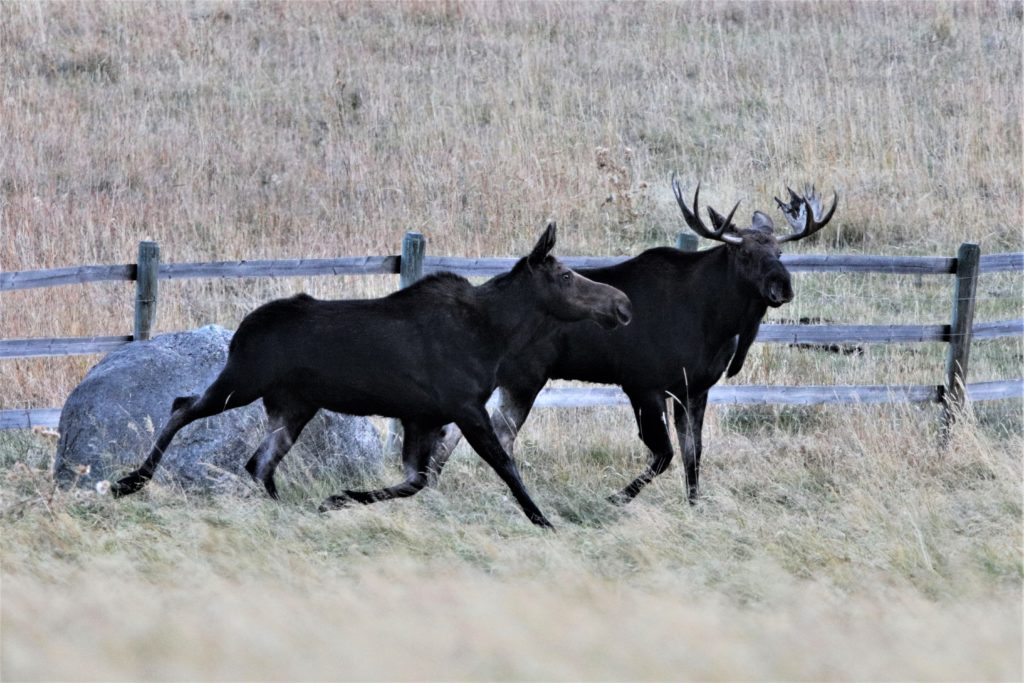 A Shiras bull moose in the rut was pursuing a cow moose in heat. She trotted away from the fence for several hundred feet and stopped. As he caught up to her, she darted back to the fence again. He pursued. She seemed anxious, stressed.
A Shiras bull moose in the rut was pursuing a cow moose in heat. She trotted away from the fence for several hundred feet and stopped. As he caught up to her, she darted back to the fence again. He pursued. She seemed anxious, stressed. 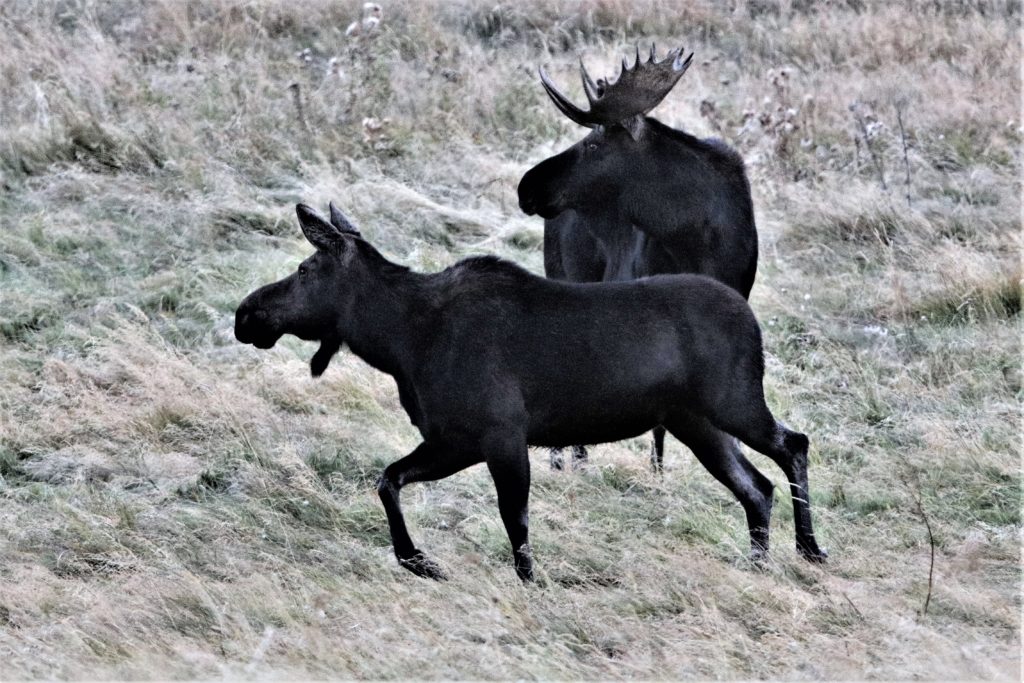 Then we discovered the reason, a moose calf was stuck inside the fence, unable to clear the top or work through the barbed wire strung between a barrier of boards. If ever we had a chance to read an animal’s mind, this was it – then and there. The bull had one thing on its mind, the cow had her youngster on her mind. Momma was beckoning the calf to leap the fence.
Then we discovered the reason, a moose calf was stuck inside the fence, unable to clear the top or work through the barbed wire strung between a barrier of boards. If ever we had a chance to read an animal’s mind, this was it – then and there. The bull had one thing on its mind, the cow had her youngster on her mind. Momma was beckoning the calf to leap the fence.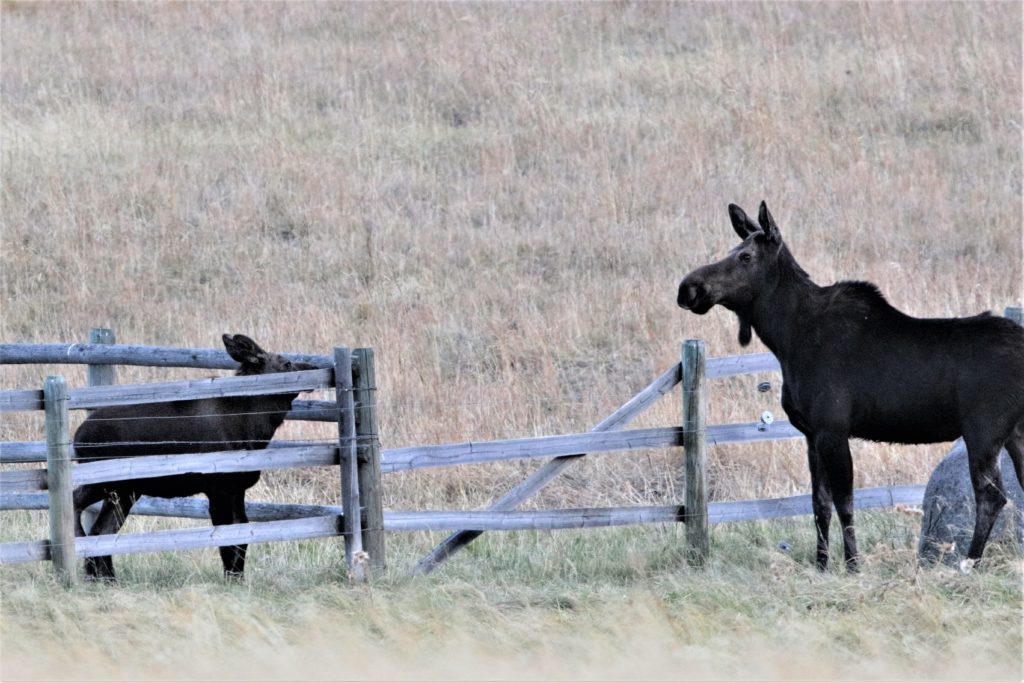 She approached it as closely as possible, stretched her neck over the fence top, then turned and bolted away from the calf for more than a hundred feet. Over and over she repeated this action. Each time the bull followed her.
She approached it as closely as possible, stretched her neck over the fence top, then turned and bolted away from the calf for more than a hundred feet. Over and over she repeated this action. Each time the bull followed her.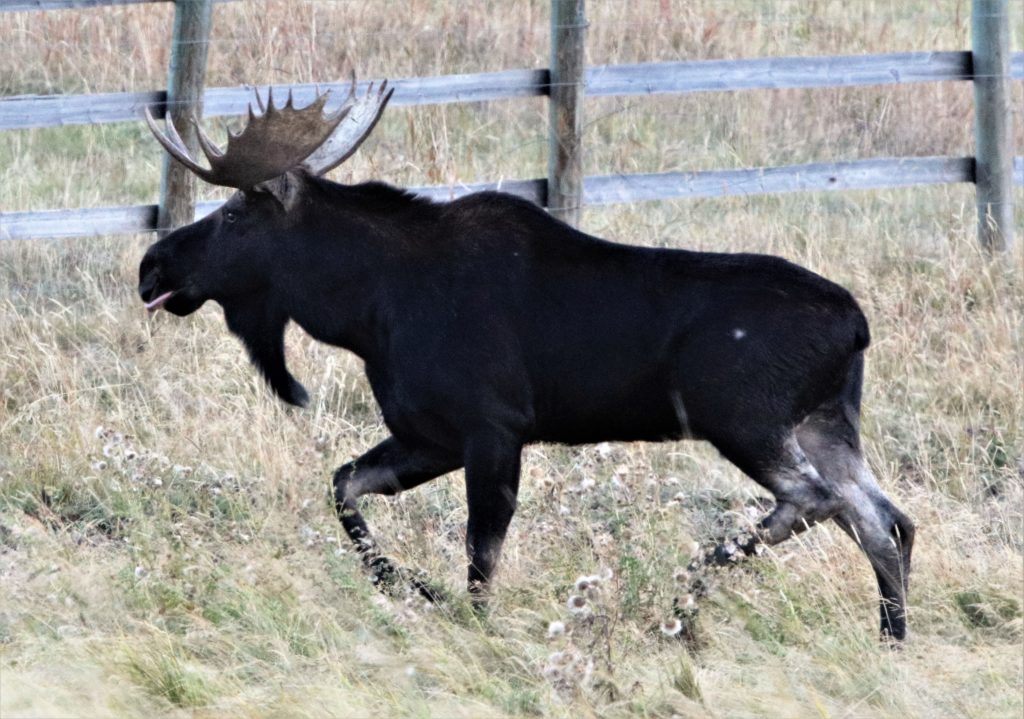
The pattern built to a frenzied level until the calf, who was frantically prancing in place, finally mustered the courage to make the big leap.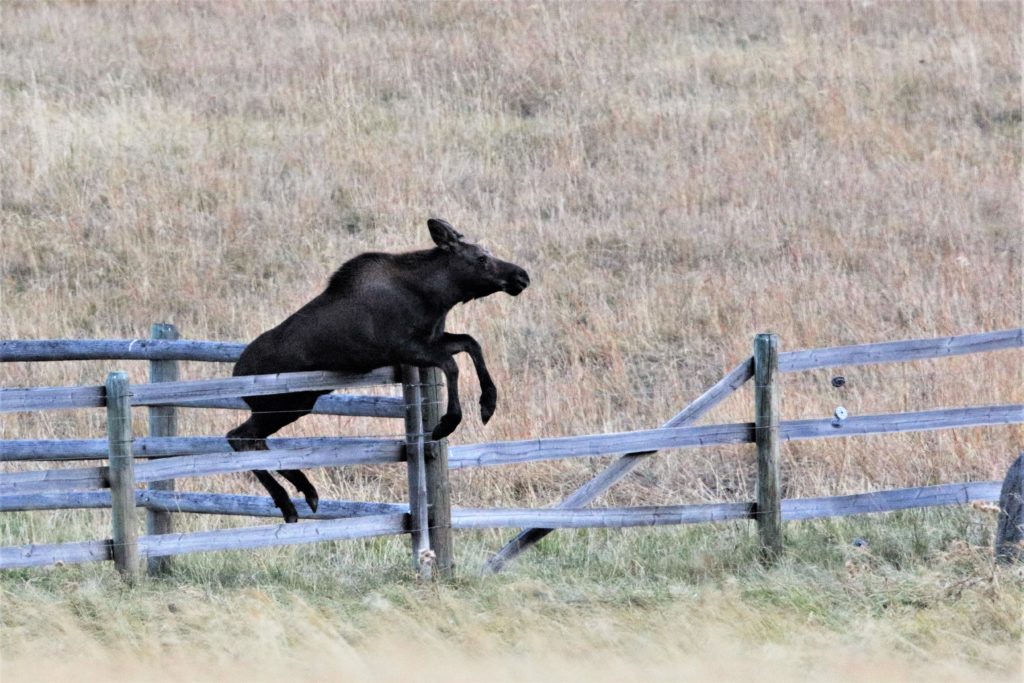 It was a hard escape. The young moose managed to thrust its center of gravity over the top, but its hind end scrambled hard to climb the fence boards and wire. First one foot shook loose the barbed wire, but the other foot seemed badly snagged. We held our breaths, very concerned the calf was hopelessly tangled. After a worrisome period of time, the other foot was freed. What a relief. We would not have been able to help it without risking an attack by its mother.
It was a hard escape. The young moose managed to thrust its center of gravity over the top, but its hind end scrambled hard to climb the fence boards and wire. First one foot shook loose the barbed wire, but the other foot seemed badly snagged. We held our breaths, very concerned the calf was hopelessly tangled. After a worrisome period of time, the other foot was freed. What a relief. We would not have been able to help it without risking an attack by its mother. 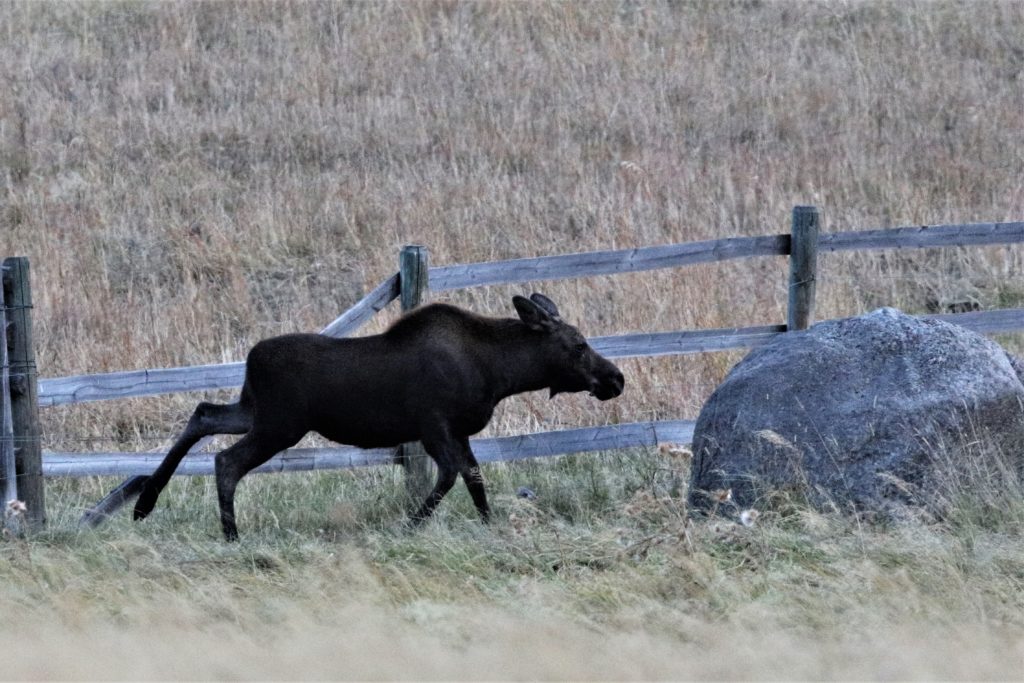
The reunion between momma and calf was remarkable; she seemed to greet the calf, as if checking him over. 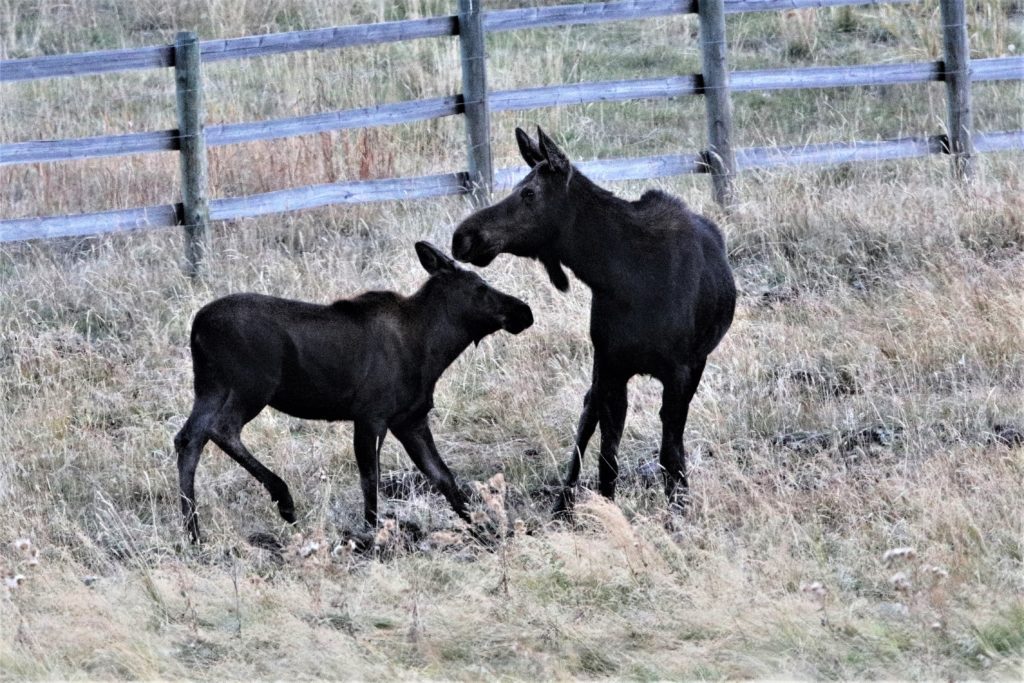
Once all the wild ones were on the right side of the fence, they trotted back into the forest with the rutting bull bringing up the rear.
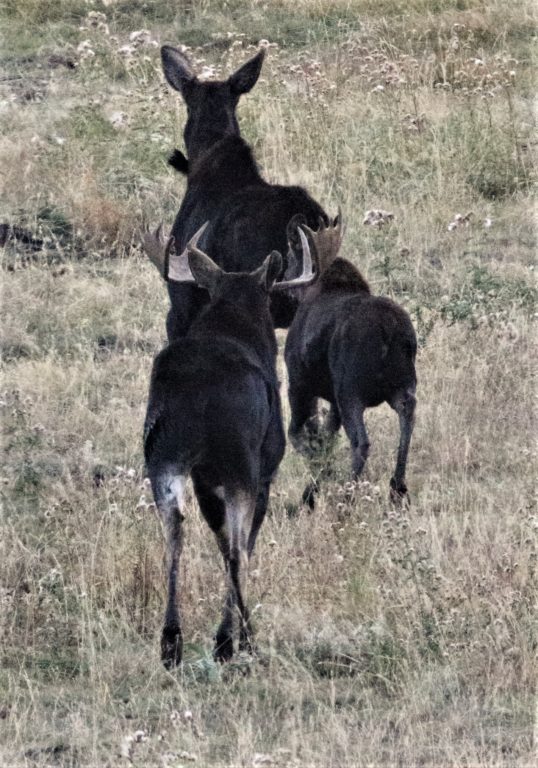
We never did see a grizzly bear in this area. Just two weeks earlier a woman was injured in an attacked at this location by a grizzly that was protecting its food source – the carcass of a cow. Her partner was able to drive the bear off by using bear spray. Five days before that another woman was attacked by a bear as she was walking her dog at a nearby fishing access point. Luckily the old lab barked so ferociously, the bear left and the woman survived with head wounds (requiring staples in her scalp) and some bruising. It was never determined if the bear was a grizzly or an American black bear. Grizzly bears are not known to prey upon humans; they are most dangerous when protecting young or food. Black bears are believed to consider humans as prey. If hiking or hunting trips are planned for wilderness areas, bear spray is highly recommended, and effective. To view a slideshow of our two weeks of photography click this link: https://terrysteelenaturephotography.com/yellowstone-national-park-2017/
(Of the four subspecies of moose in North America, this Shiras (pronounced “shy’-rahs”) bull of the Rocky Mountains in the US and southern Canada is smaller antlered than the big ones of Alaska, the northwestern moose of parts of Canada to northern Minnesota-Michigan, or the eastern moose. Still, Shiras are big – reaching more than 750 lbs. This bull was good sized for a Shiras. The largest of them control harems, while others search out lone females. That seemed to be the case here. The population of Shira moose is in a slight down trend. It is believed that this trend is the result of reintroducing wolf populations more than hunting which is heavily regulated. Encountering barbed-wire fences in traditional grazing zones can’t be healthy for young moose either.)